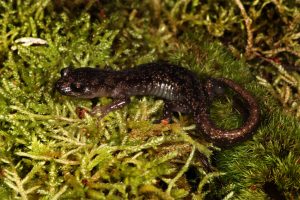Assessing patterns of genome architecture and co-evolutionary interactions
One of the most ancient examples of obligate symbionts are organelles including mitochondria and chloroplasts. In animals, mitochondrial genomes encode several genes involved in oxidative phosphorylation, the final steps of cellular respiration, while the remaining genes are encoded by the nuclear genome.

This requires efficient coordination between the two genomes. Variation in energetic demand of animals likely exerts different levels of selection on genes related to metabolic function. For example, birds and mammals require high levels of energy and experience strong levels of purifying selection on mitochondrial genes, likely to maintain metabolic function. In contrast, salamanders have extremely low metabolic rates and experience relaxed selection on mitochondrial genes and increased variation in genome architecture. The high levels of genomic variation (mitochondrial and nuclear) found in salamanders provides a unique opportunity to investigate the drivers of genome evolution.